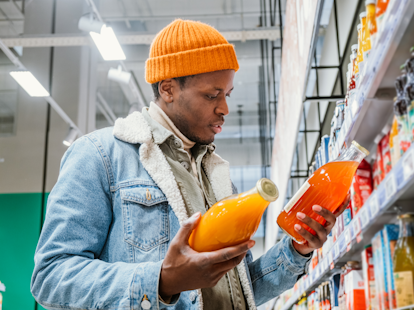SG 092.22
The Netherlands has published an amendment to its Commodities Act on packaging and consumer articles. The new law became effective on July 1, 2022
In April 2022, the Netherlands issued Regulation of the Minister of Health, Welfare and Sport of April 26, 2022, 3348384-1027396-VGP (the Amendment), to revise the nation’s Commodities Act on packaging and consumer articles that come into contact with food (Commodities Act on packaging and consumer articles, Commodities Act). This comprehensive amendment contains important changes to several Chapters in the Commodities Act.
Highlights of changes in the Amendment are summarized in Tables 1 and 2. It is interesting to note that the (relatively high) specific migration limit (SML) for lead remains at no more than 0.1 mg/kg in food contact glass and glass ceramics (Chapter V) as the European Commission is working on legislation that will also include a SML for lead in these types of material.
Regulation of the Minister of Health, Welfare and Sport of April 26, 2022, 3348384-1027396-VGP, amending the Commodities Act Regulations on packaging and consumer articles in connection with the removal and addition of substances to Part A of the Annex and some technical amendments | |
|---|---|
| Chapter I ‘Plastics’ Table I-1 | Revises positive list of substances which may still be used at the national level for the manufacture of plastics, including 19 new entries |
| Chapter II ‘Paper and cardboard’ §1.1 and 1.2.1 |
|
| Chapter II ‘Paper and cardboard’ §1.2.2r | Modifies the list of excipients as auxiliary materials and finishing agents, by deleting several entries associated with perfluoroalkyl and polyfluoroalkyl substances (PFAS) |
| Chapter II ‘Paper and cardboard’ §1.3.3 |
|
| Chapter II ‘Paper and cardboard’ §2 and 2.1 | Renames title to ‘Paper and cardboard intended for hot use (use as cooking packaging) and for filtering drinkware at temperatures above 80 °C’ with a new description |
| Chapter II ‘Paper and cardboard’ Table to §2.3.2 |
|
| Chapter III ‘Rubber’ §4.2 Substances which may be used in the manufacture of rubber products’ Table to §5.7 |
|
| Chapter IV ‘Metals’ §2.1c ‘Metallic coatings’ | Strengthens restriction of total lead:
|
| Chapter IV ‘Metals’ Table to §4.3 ‘Specific migration’ | Revises the list of chemicals for specific migration to include the following:
|
| Chapter V “Glass and glass ceramics’ Table to §4.2 ‘Specific migration’ | New set of requirements (see Table 2 below) |
| Chapter VII ‘Textiles’ Table to §3.2 ‘Specific migration’ | New requirements for the specific migration of the following substances:
|
| Chapter X ‘Coatings’ |
|
| Chapter XI ‘Dyes and pigments’ | Revises Table to contain the specific migration of 16 metals in §4a ‘Requirements for colored finished product’, including new requirements for the following substances:
|
| Chapter XII ‘Epoxy polymers’ | Revises Table to §3.3 to include the specific migration of following substance:
|
| PASS | |
Table 1
| Antimony | 0.04 |
| Arsenic | 0.01 |
| Barium | 1 |
| Boron | 1 |
| Cadmium | 0.01 |
| Cerium | 1 |
| Chromium | 0.1 |
| Fluorine | 1 |
| Cobalt | 0.05 |
| Lithium | 0.6 |
| Lead | 0.1 |
| Manganese | 0.6 |
| Nickel | 0.02 |
| Rubidium | 1 |
| Zirconium | 2 |
Table 2. SML for glass and glass ceramics
The Amendment became effective on July 1, 2022.
According to the Amendment, food contact materials and articles that comply with the Commodities Act as it reads on June 30, 2022, and were placed on the market before January 1, 2023, may remain on the market until stocks are exhausted. This six-month transitional period does not apply to paper and paperboard coatings containing specified PFAS chemicals. Such coatings are currently not found on the Dutch market and should not be accepted during the transitional period.
SGS technical experts have extensive knowledge and testing experience in materials and articles in contact with food. They work to ensure that your products meet the appropriate regulations for food contact materials, paving the way for compliance. From overall migration tests to expert advice on emerging regulations, compliance issues and documentation review, SGS is the partner to trust. In the end, it’s only trusted because it’s tested. Discover more on our website.
For enquiries, please contact:
Dr. Hingwo Tsang
Global Information and Innovation Manager
t: (+852) 2774 7420
© SGS Société Générale de surveillance SA- 2022 - All rights reserved - SGS is a registered trademark of SGS Société Générale de surveillance SA. This is a publication of SGS, except for 3rd parties’ contents submitted or licensed for use by SGS. SGS neither endorses nor disapproves said 3rd parties contents. This publication is intended to provide technical information and shall not be considered an exhaustive treatment of any subject treated. It is strictly educational and does not replace any legal requirements or applicable regulations. It is not intended to constitute consulting or professional advice. The information contained herein is provided “as is” and SGS does not warrant that it will be error-free or will meet any particular criteria of performance or quality. Do not quote or refer any information herein without SGS’s prior written consent.



